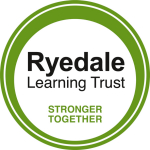The final AoS 3 song is Moby’s Why does my heart feel so bad? from the 1999 album, Play.
9. Why Does My Heart Feel So Bad? - Moby (GCSE Music Edexcel)
Very basic facts on...'Why Does My Heart Feel So Bad?' - by MobyFrom 'Play'Set Work 9 for GCSE Music EdexcelFrom Area Of Study 3 - Popular Music in ContextGe...
Who is Moby?
Moby is an artist from the USA who has worked in many popular musical styles including punk, rock and latterly dance styles. His career has not always been filled with success with much of his early work being commercially unpopular until the release in 1991 of his single ‘Go’ which bought him fame in Britain. He then spent much of the 90s touring with bands like The Prodigy, Orbital and the Red Hot Chili Peppers.
The album ‘Play’, from which ‘Why Does My Heart Feel So Bad’ is taken was released in 1999 prior to which Moby had spent the previous creating material for the album. The three previous singles received little attention whereas ‘Why Does My Heart Feel So Bad’ reached number 16 in the UK charts and was might with acclaim by music critics.
Tonality and Harmony
The key of the song is A minor, and the harmony is built using two 8-bar chord sequences. These are used throughout the verses and choruses. The chord sequences are shown below – notice each chord is always repeated, creating a mini-block of two bars:
| Bar | 1 | 2 | 3 | 4 | 5 | 6 | 7 | 8 |
| Chord | Am | Am | Em | Em | G | G | D | D |
Sequence 1 is used in the verse: ‘Why does my heart feel so bad?’
| Bar | 1 | 2 | 3 | 4 | 5 | 6 | 7 | 8 |
| Chord | C | C | Am | Am | C | C | Am | Am |
Sequence 2a is used in the first half of the chorus:’These open doors’
| Bar | 1 | 2 | 3 | 4 | 5 | 6 | 7 | 8 |
| Chord | F | F | C | C | F | F | C | C |
Sequence 2b is used in the second half of the chorus.
Task 1:
Have a go at playing through the above chord patterns. In the exam, a common question is to give you a copy of this chord diagram, with some chords missing, and you have to fill in the gaps. Although remembering the changes is possible you might find it easier to hear them and playing them will certainly help you to understand the changes more. If you are not sure how to construct the chords try having a look at this website. Don’t forget to hold each chord for four beats, and then try playing some different rhythmic patterns with them.
Melody – vocal samples
The entire melody line – all the singing in this song – is created using vocal samples, in this case of 1950s gospel singers. A vocal sample is exactly what it implies – a short snippet of someone else singing, which he drops into his song. He then writes all of the other musical ideas around these. To fit with the chord sequence, the samples selected are in A minor.
There are two samples, ‘Why does my heart/why does my soul?’ (male voice) and ‘These broken walls’ (female). Moby makes them more interesting to listen to by varying which chord sequence is used with which sample – a technique called reharmonisation (harmony – DR G SMITH). This happens in the chorus. He also uses echo canon.
He also adds digital effects to them to transform them – see below for details.
Moby prefers to use samples rather than record himself singing because the emotional range and the sounds of different voices was something he enjoyed exploring. Also, if the samples are out of copyright, they’re free to use too!
Technology in the song – equipment
Moby records all his own music in his own home, as many solo artists working in a club dance style might. It is important to know which bits of gear he uses to construct the song:
- Drum machine (Roland TR909) – used to create the drum loops in the song.
- Piano sounds (Emu Proformance/Yamaha Synth) – the two piano sounds used are taken from these two sources.
- Synth sounds (Roland Juno 106/Yamaha SY22 and SY85 synths) – the bass sound and various synth strings come from these synthesisers (a bit like a keyboard).
- Vocal sounds (Akai S3200 sampler) – the sounds of the 1950s gospel singers, mentioned above, are lifted from the original recording, and edited using a sampler.
Technology in the song – effects
The use of effects refers to digital manipulation and alteration of sounds, either as their being recorded, or in the post-production process (after the recording has been completed). Moby uses a Yamaha SPX900 Multi-effects unit in the production of this song.
Firstly, you need to understand what ‘EQ’ means – this is where certain frequencies (high, middle or bass) are boosted or reduced to create a specific sound. This is done post-production. The best example to remember is ‘telephone voice‘ sound in verse 2. This is created by removing the high and bass frequencies from the vocal sample, making it sound like the singing is being done down a telephone line.
Two further effects used in this song are reverb (imagine the feeling of performing in a large church), and delay (a type of echo effect, that you might get with the sound bouncing around the walls of a cave!).
Task 2:
Try listening to a random short section of the song, and identify which layers of the song are playing, and which bits of equipment are being used to create the sounds, and which effects are being used at that moment. It is the quickest way of learning this info.
Structure
The song has a simple verse/chorus structure, best shown by the diagram below (IMPORTANT – EDEXCEL’s score refer to the Verse as ‘Section A1-8’ and the Chorus as ‘Bx1 and By1 etc, just in case you’re also looking at that and are confused):
- Green – Vocal samples, either ‘Why does’ or ‘These open doors’
- Blue – Main piano pattern, chord sequence 1, 2a or 2b
- Red – Additional piano melodies and synth strings chords (the chords used here always match the pattern of the blue piano chords)
- Orange – Synth bass (always matches the root/bottom note of the blue piano chords)
- Yellow – Drum loops
If this is too small for you to read, then you can open the Word document by clicking here. Bear in mind that the paper size for this is A3, which you might have to adjust if you want to print at home.
Other basic info
4/4 time signature, 96 bpm, homophonic texture throughout. Dynamics are determined by the number of layers performing at any one time – less layers = quieter dynamics.
Revision
As with all the pieces, there is a three-way process to learning everything you need to know about the piece:
- Know the basics (C) – title, composer, key, time signature, instrumentation etc. This needs learning to start with.
- Understand the detail (B/A) – the technical details of the piece, and how they relate to DR G SMITH. This needs you to have written up all the detail onto your score. Listening to the piece lots whilst following through the score is what is needed here.
- Hear the detail (A/A*) – being able to recognise the sound of all the technical language in the pieces, with no score in front of you. Listening to the piece without the score is what you need to do here.
This checklist document should help you with the process.



 Ryedale School is a partner in and co-ordinator for the Yorkshire Teaching School Alliance.
Ryedale School is a partner in and co-ordinator for the Yorkshire Teaching School Alliance.